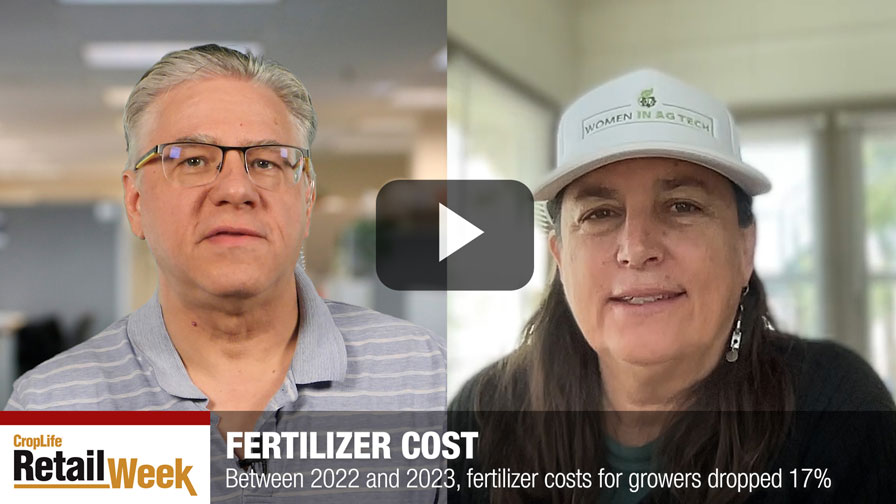Ag Retail Consolidation Trending Up
For anyone who grew up during the 1980s, a common sight in many business establishments was a video game called Pac-Man. In this game, players controlled a hungry yellow character who spent his time gobbling up white dots, scoring points along the way.
To many in the ag retail marketplace, the consolidation trend of the past few decades has, in many ways, resembled a Pac-Man-like game. Big ag retailers have systemically swallowed up smaller ones, expanding their market penetration in the process. Indeed, in an average year back in the early 2000s, approximately seven companies would disappear from CropLife magazine’s annual CropLife 100 listing via the acquisition/merger route.
But then came the market crash of mid-2008. As ag retailers were forced to write down millions of dollars in fertilizer inventory (as grower-customers pulled back on their fall orders), many of them stopped playing the consolidation game. In fact, between 2008 and 2011, only a total of six regular CropLife 100 ag retailers were acquired by larger ones.
“The last 18 months, there hasn’t been a lot going on with consolidation,” says Larry Arndt, agronomy team leader/sales & marketing team leader for MaxYield Cooperative, West Bend, IA.
The reason for this is simple, says Devin Mogler, vice president of agronomy operations for Farmers Cooperative Co., Ames, IA — a string of strong revenue performances by CropLife 100 retailers during the past three years. “Consolidation has slowed somewhat in recent years,” says Mogler. “Typically, merger and acquisition activity is heightened when times are bad, and we’ve been experiencing some pretty strong years across our trade territory and across the ag sector in general.”
Turning Back On
Of course, now that many ag retailers have rebuilt their businesses from the downturns of 2008 and 2009 — and in some cases, are flush with cash as a result — they are looking to get back into the consolidation game. And in the minds of many market watchers, this is a good thing for the marketplace as a whole.
“Consolidation is a natural process,” says Jeff Tarsi, senior director, business strategy for Crop Production Services, Cordova, TN. “There’s more demand on retailers to provide bigger, faster equipment. This will probably push out the smaller retailers that don’t want to or cannot re-capitalize and invest another $2 million to $3 million to expand their services, equipment and other important supporting items such as bulk seed and fertilizer storage. Those that choose to re-invest will be the long-term players.”
MaxYield Cooperative’s Arndt agrees. “We think that consolidation drives efficiencies, and that’s probably okay,” he says. “There are always those that hate to see change and feel that they’re losing competition, but I don’t see it as a long-term disadvantage. I think consolidation helps drive costs out of the whole retail system.”
The past year or so, one of the hot beds for retailer consolidation has been the state of Wisconsin. One of the Badger State’s largest cooperative, United Cooperative of Beaver Dam, has spent the better parts of 2011 and 2012 gobbling up neighboring cooperatives, including Mid-County Cooperative, Pulaski Chase Cooperative and Cooperative Services. Put together, these acquisitions have helped the company move from No. 52 on the 2009 CropLife 100 to No. 24 today.
According to David Cramer, United Cooperative president/CEO, all of these mergers tie into the company’s long-range plans. “The world population will grow significantly in the next 30 years,” says Cramer. “As a result, the agriculture industry now puts a great deal of effort into improving efficiencies and sustainability so this generation and future generations can continue to produce food and fuel efficiently.”
Another Wisconsin cooperative, Wisconsin River Co-op, Adams, WI, appears to be taking a similar path. In October, the company announced plans to merge with Farmer’s Co-op Supply and Shipping Association, West Salem, WI. According to Scott Firlus, CFO-COO for Wisconsin River Co-op, this consolidation will help the company “to improve its facilities and equipment utilization and add efficiencies to our sales and delivery routes.”
Still, there are those ag retailers that think consolidation can present a “game over” scenario in some situations. “It potentially homogenizes the ag retail presence,” says Bill Hubbell, general manager for Wilco-Winfield, Mt. Angel, OR. “The more markets that are supported by a single headquarters, the less uniqueness will be available and affordable by more market-specific retailers.”
Herbert Woolsey, president of Woolsey Brothers, Vandalia, IL, shares this view. “I think retail customers will have less options for products and services with fewer dealers in their areas, and that cannot be good for them,” says Woolsey. “They need some options and some significant competitive situations, and in some cases, that’s getting a little slim.”
Then there’s the potential impact on some of the smaller ag retailers themselves. “Consolidation of retail has made it difficult for small distributors and manufacturers,” says Kyle Baltz, manager for Baltz Feed Co., Pocahontas, AR. “Having fewer suppliers is causing some interruptions in the supply chain.”
A Super-Charged Player
Good, bad or indifferent, ag retail consolidation appears to be ready to pick up significant speed in 2013 as a new super-charged player enters the game. In mid-2012, Pinnacle Ag Distribution officially launched. Financially backed by Apollo Global Management, LLC, and headed up by former United Agri Products veterans L. Kenny Cordell and Dean Williams, Pinnacle is on a mission “to be a top five retail supplier by 2017,” according to its company Website. Naturally, to do this, the company will likely go the consolidation route.
In September, Pinnacle announced it entered into a strategic partnership with Jimmy Sanders, Inc., Cleveland, MS (ranked No. 8 on the 2012 CropLife 100 listing with annual sales in the $200 million to $999 million range). Market rumors indicate that other such deals involving Pinnacle and current CropLife 100 retailers are in the works, which should push the company’s revenues above $1 billion by the end of 2013.
Perhaps responding to these market moves, current large ag retailers are seeking to keep their own consolidation games going. At presstime, 2012 CropLife 100 No. 4 Wilbur-Ellis Co. purchased No. 97 Mott Grain. Earlier in the year, No. 5 CHS purchased the assets of Hamilton Farm Bureau (ranked No. 80 on the 2011 CropLife 100 list) while No. 1 Crop Production Services acquired Ritter Crop Service (ranked No. 46 in the 2011 CropLife 100).
As for the smaller players in the ag retail game, an uptick in consolidation in 2013 will lead to plenty of decisions. According to Wilco-Winfield’s Hubbell: “It forces us to manage our business more efficiently to remain competitive.”
For others such as Baltz Feed, the question is a matter of market fit. “Consolidation leaves us wondering if we will have a place in the new world,” says Baltz.
However, according to Cliff Love, general manager for Carolina Eastern-Vail, Auburn, NY, the ultimate outcome for retailers remains unchanged, whether the consolidation game is being played or not. “At the end of the day, any retailer’s success or failure will be based on their ability to meet the needs and desires of their market as it appears today,” says Love. “The next question is ‘what will that market be like tomorrow?’ Some issues and needs will be broad-based. However, others will be more localized. A retailer that pays close attention to the marketplace they compete in and adapts to it will have satisfied, individual customers. And these customers become some of the best salespeople they could ever have.”






